The suburbs of Sinj
Bajagić
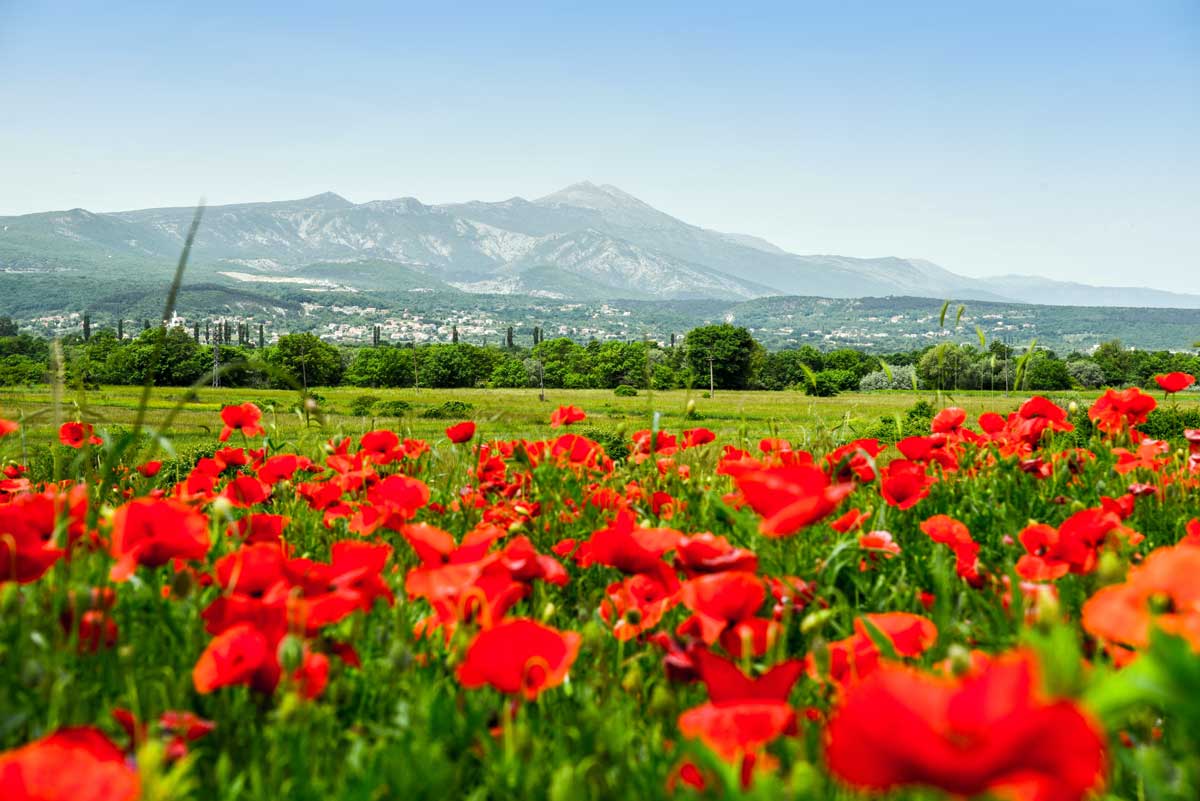
Željko Zrnčić
Bajagić is a settlement of remarkable natural beauty and it is located about 4 km away from the town of Sinj. Bajagić borders the edge of the Hrvatačko polje and lies between the suburbs of Rumin, Han and Obrovac Sinjski. It is located on the left bank of the Cetina River, the main artery of this area, as it is popularly known. Bajagić rises on average altitude of 350 m above sea level. There is no bridge that spans over the river in the suburb itself. The closest bridges are in the settlements of Rumin (in Panj village) and Han.
The Church of St. Nicholas is located in Bajagić. The church was built in 1937 in neo-romantic style out of natural stone.
The medieval cemetery, an archaeological site in the fields along the Malin stream (left tributary of the Cetina), is a protected monument of culture. The archaeological remains of the ancient tombstones and plates that once were visible are expected to be found underground. The cemetery has not yet been fully explored by archaeologists, but scientists agree that it is most likely to be assigned to the classical old Croatian period between the 9th and the 12th century.
Brnaze
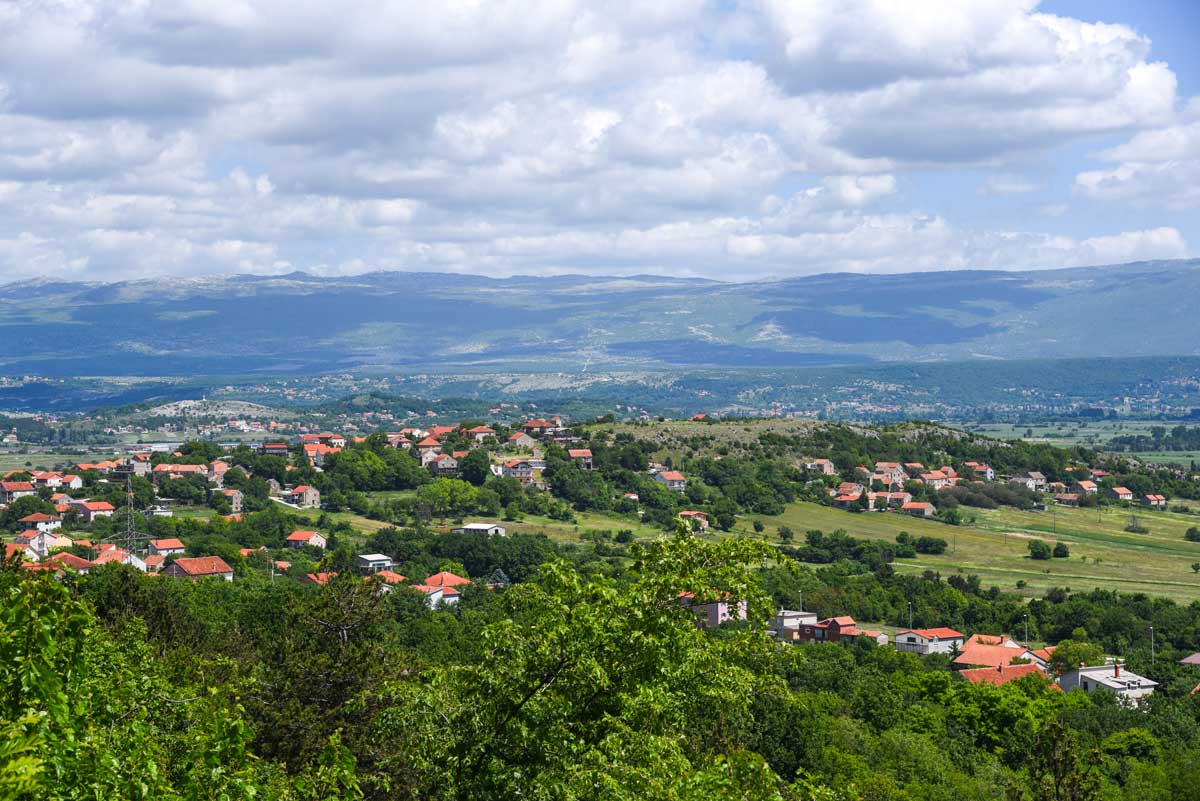
Željko Zrnčić
Brnaze is one of the most progressive and most densely populated villages on the outskirts of the city of Sinj - the suburb has around 50 different commercial service companies as well as companies in the fields of trade and catering, meaning that the suburb partly takes on the characteristics of a town.
Archeological discoveries that provide new insights into early Christianity were collected on Brnaška glavica, the hill above Brnaze. The remains of the old Croatian church of St. Michael are located on the Mioljača, a part of the suburb Brnaze, and they consist of six apses from the 9th or 10th century. This church again was probably built on the foundations of the early Christian church. Fragments of church stone furniture from the early Croatian period, a part of an early Christian altar wall as well as some ancient monuments were discovered. Late medieval graves were found in and around the church, from which other objects were also extracted (rings, earrings, bridles and coins).
In 2018, the construction of the new parish church began, which was named sv. Nikola Tavelić. The new church will be built at the exact same place where the old one once stood, back in 1972. Up there, on the 40.5 m high, imposing church tower hang four church bells and the top of the tower is adorned with a cross. The largest church bell is dedicated to the Blessed Virgin Mary, Our Lady of Sinj, the patron saint of both the parish and the city of Sinj as well as the area of Cetinska krajina; the second bell is dedicated to St. Nikola Tavelić, the bearer of the church's name and the patron saint of Brnaze; the third bell is dedicated to Saint Francis of Assisi, founder of the Oder of St. Francis; the fourth bell is dedicated to Saint Anthony of Padua, the popular saint of the Order of St. Francis.
There are many active amateur and sports clubs in Brnaze. The artistic-cultural association (Croatian: Kulturno-umjetničko društvo; abbreviated "KUD") Brnaze, which was founded in 1975, stands out due to its long tradition. The KUD Brnaze has been cherishing traditional customs as well as songs and folk dances for many years. This constant commitment to folk customs makes a vital contribution to teaching local folklore to both younger and older people. The mandolin ensemble, which accompanies the folkdance group on their travels, is also a vital part of the association.
Čitluk
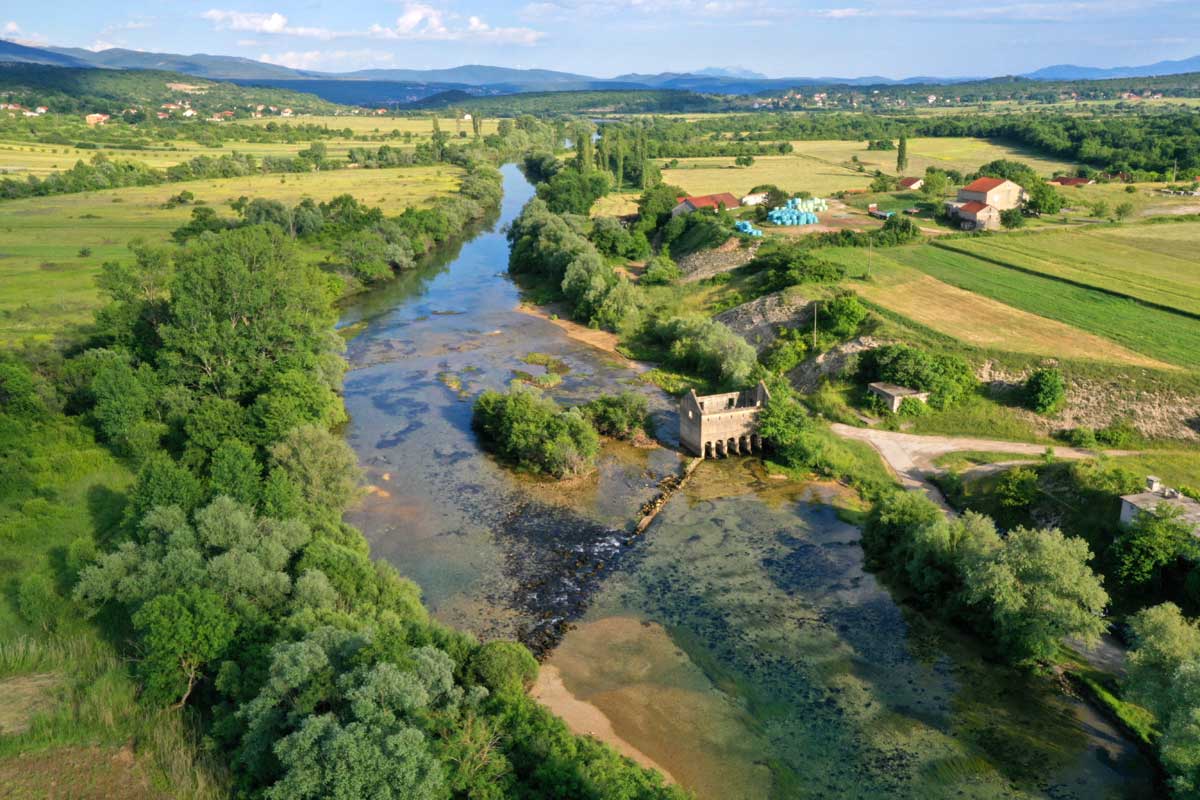
Ante Gašpar
Čitluk is a village situated north of the town of Sinj, between the Cetina River and the surrounding villages of Hrvace, Karakašica, Jasensko and Glavice. The suburb extends from the river channel of the Cetina along the edge of the Hrvatačko polje towards Jasensko, over the hills and valleys between these two places. On the other side of the river, located directly opposite one another, is the village of Bajagić. The village displays the typical features of the areas of the Zagora and of the Centinska Krajina and has a centuries-lasting, but hardly explored history.
The Roman city of Colonia Claudia Aequum, whose roots go back to the 1st century A.D., probably to the time of Emperor Augustus (certainly to the time of Emperor Claudius), was once located on the site of today's Čitluk. At that time, it had the status of an oppidum civium Romanorum (settlement of the citizens of the Roman Empire). Among the numerous valuable objects found here, both the statue of Hecate and the head of Heracles stand out. Both sculptures are part of the archaeological collection of the Franciscan monastery in Sinj. The Roman general Gnaeus Minicius Faustinus Sextus Iulius Severus came from Aequum, who suppressed the uprising of the Jews and destroyed Jerusalem in 135. An amphitheater is also believed to exist in this area, which served as a scene for bloody battles between gladiators.
Glavice
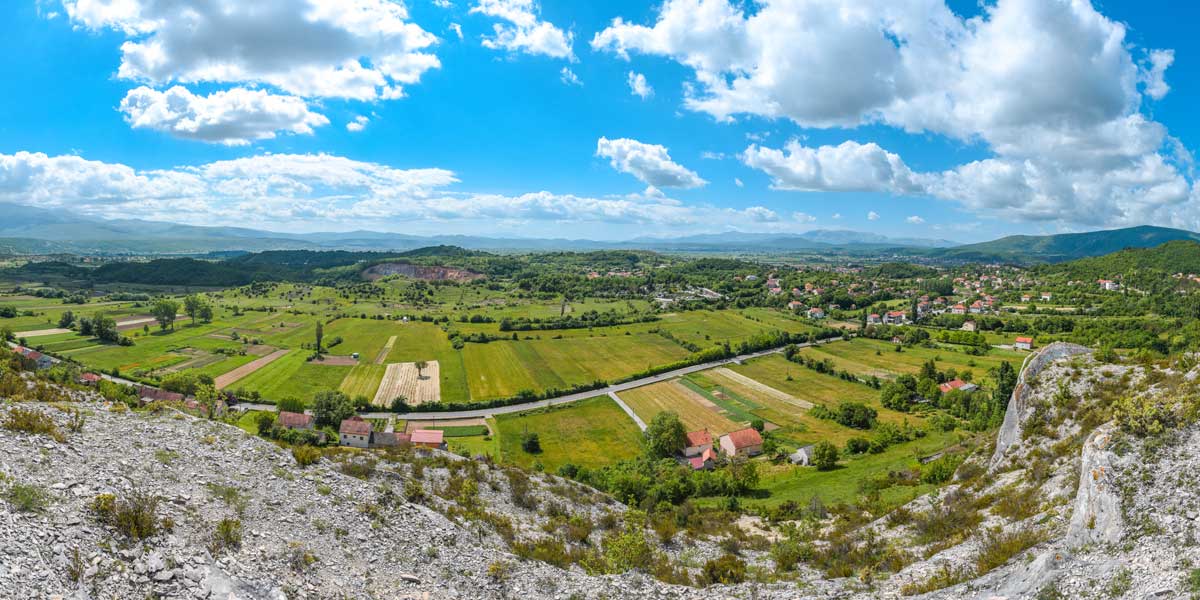
Željko Zrnčić
Glavice is one of the most populous villages in the Cetinska krajina. Mainly cattle breeding is practiced there, but also agriculture, largely thanks to the fertile Sinjsko polje - the field of Sinj.
The beautiful, old legend of the place, which in the Croatian language bears the somewhat unusual name Smradovo ("smrad", in English: stench), says that the village not only has the most fertile soil, but also the purest source of the spring Jaža. Legend has it that Saint George threw the dragon's tail into this spring after he had defeated him.
The suburb is characterized by many hills and knolls (Croatian "glavice"), after which the village is named. The natural treasures as well as the beauties of this area have attracted many adventurers and investors. On the hill Križ (in Englsih: cross), there is a 9.5 m high cross covered with granite and marble, where reliefs and biblical quotations can be admired. It was built exactly where the old cross once stood but was eventually destroyed during the Second World War. The Križ hill offers a majestic view over the entire Cetinska krajina.
The football club NK Glavice, founded in 1946, is very active in Glavice. The KUD Glavice, the oldest folklore association of the Cetinska krajina, is hardly any less committed in terms of dedication than NK Glavice. For decades, the KUD Glavice has been presenting folk customs, round dances and traditional chants from their own homeland. Performances that attract a large number of enthusiastic viewers are particularly popular abroad.
The parish church of Glavice is dedicated to St. John. The feast of St. John the Apostle and Evangelist is celebrated in the Croatian Catholic Church on December 27th.
Gljev
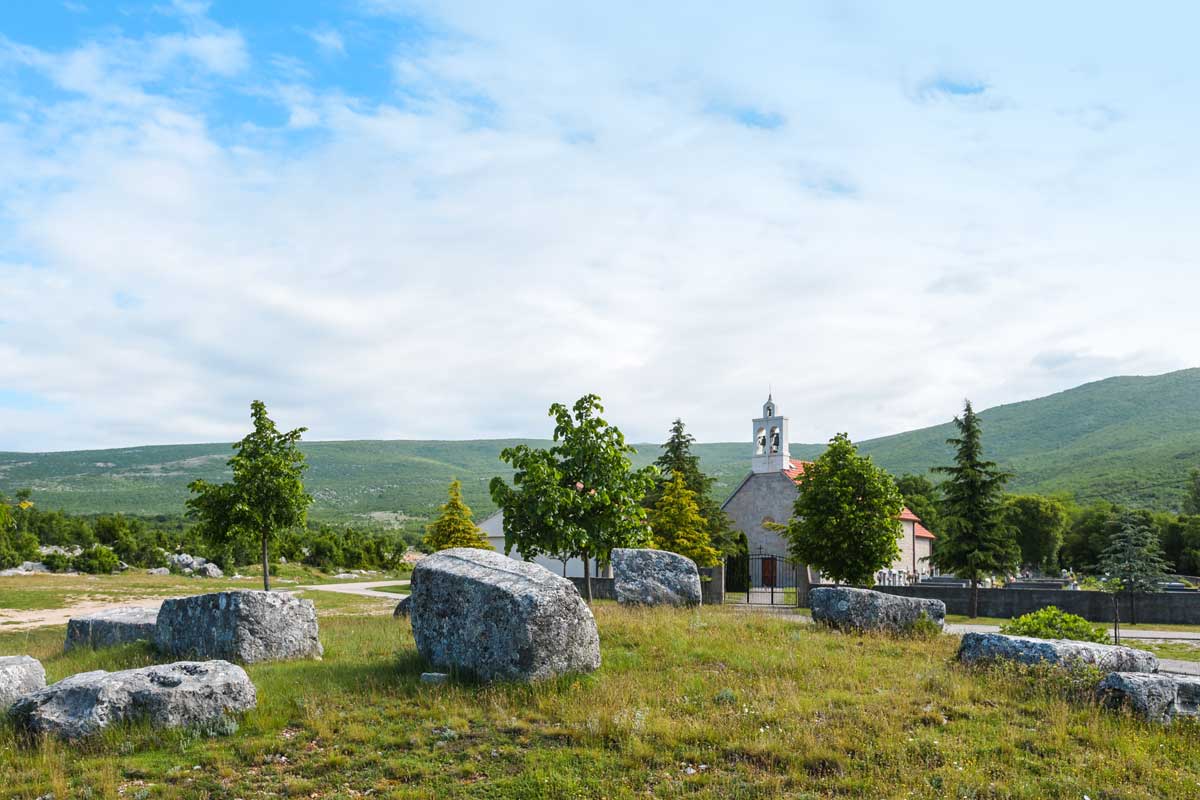
Željko Zrnčić
Gljev is a village located 15 km away from Sinj - in the highlands above the Sinjsko polje, on the mountain slopes of the Kamešnica, not far from the Croatian-Bosnian-Herzegovinian border. Most of the commercial and residential properties are located on the south-western slopes of the Kamešnica, along the fertile fields in the Karst region. As in most of the suburbs around the Cetina, Gljev experienced a demographic decline at the end of the 20th century. The reason for that was the relocation of the working population, who preferred the surrounding cities of Sinj and Split. The reasons being of a very pragmatic nature indeed: available jobs, many educational opportunities and better living conditions in general.
The residents of Gljev take pride in preserving their traditional customs: making opanci (Croatian “opanak”, in English: closed traditional sandals) and celebrating their ancestors' traditional customs of Kamešnica during the carnival season.
The Church of Saint Jerome and Saint Peter, which is not only a protected cultural monument but also an archaeological site, is located in the settlement as well. Outside the cemetery, there is a small number of late medieval headstones.
Jasensko
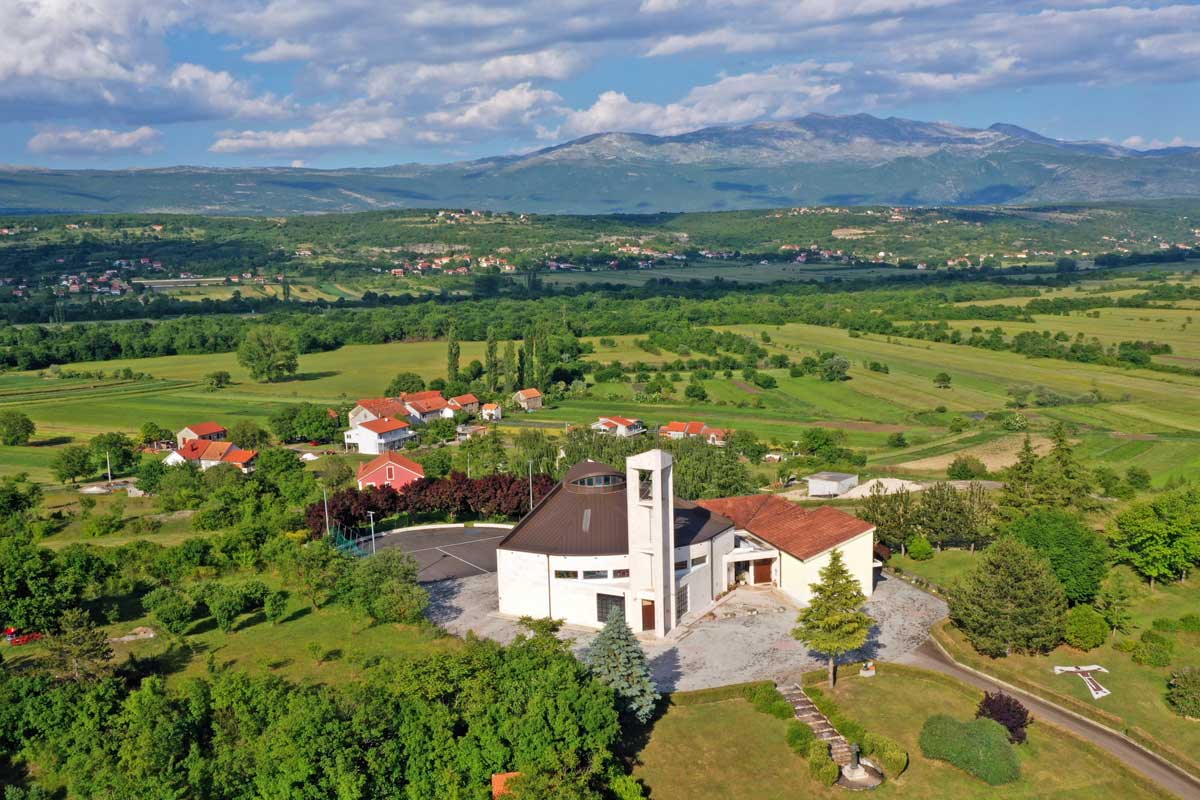
Ante Gašpar
Jasensko is a village located east of Karakašica and south of Čitluk. The villages, which are not far from each other, adorn the diverse landscape, which is ideal for adventurous excursions, long walks or even cycling along the newly constructed bicycle paths. Back in 1999, a new church was built between the villages of Jasensko and Čitluk and it was dedicated to St. Francis of Assisi.
Karakašica
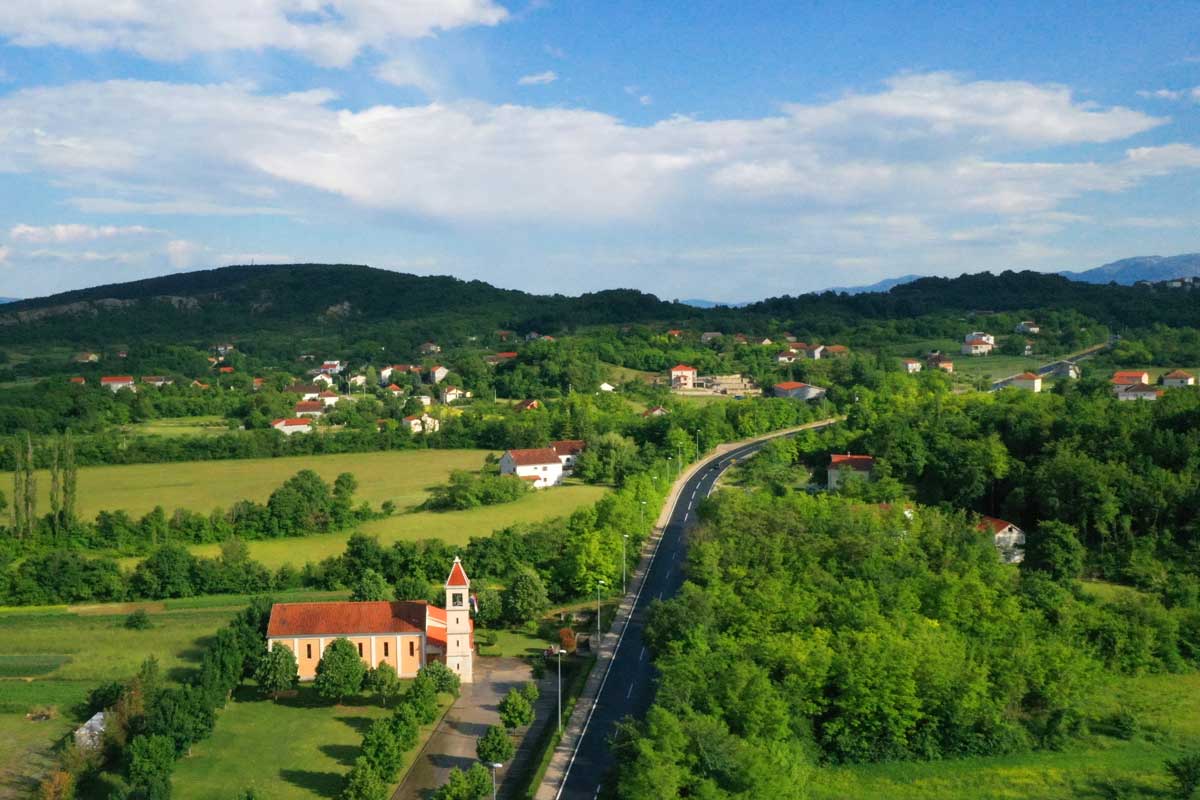
Ante Gašpar
Karakašica is a village located west of Jasensko and north of Lučane. There are breathtakingly beautiful landscapes as far as the eye can see. Saint Leopold Bogdan Mandić (Croatian priest of the Capuchin Order, a very popular confessor and the second Croat who was canonized by the Roman Catholic Church - after Nikola Tavelić), is the patron saint of both the local church as well as the suburb. He passed away in Padua, Italy, in 1942. His feast day is celebrated in the Croatian Church Calendar on May 12th.
Lučane
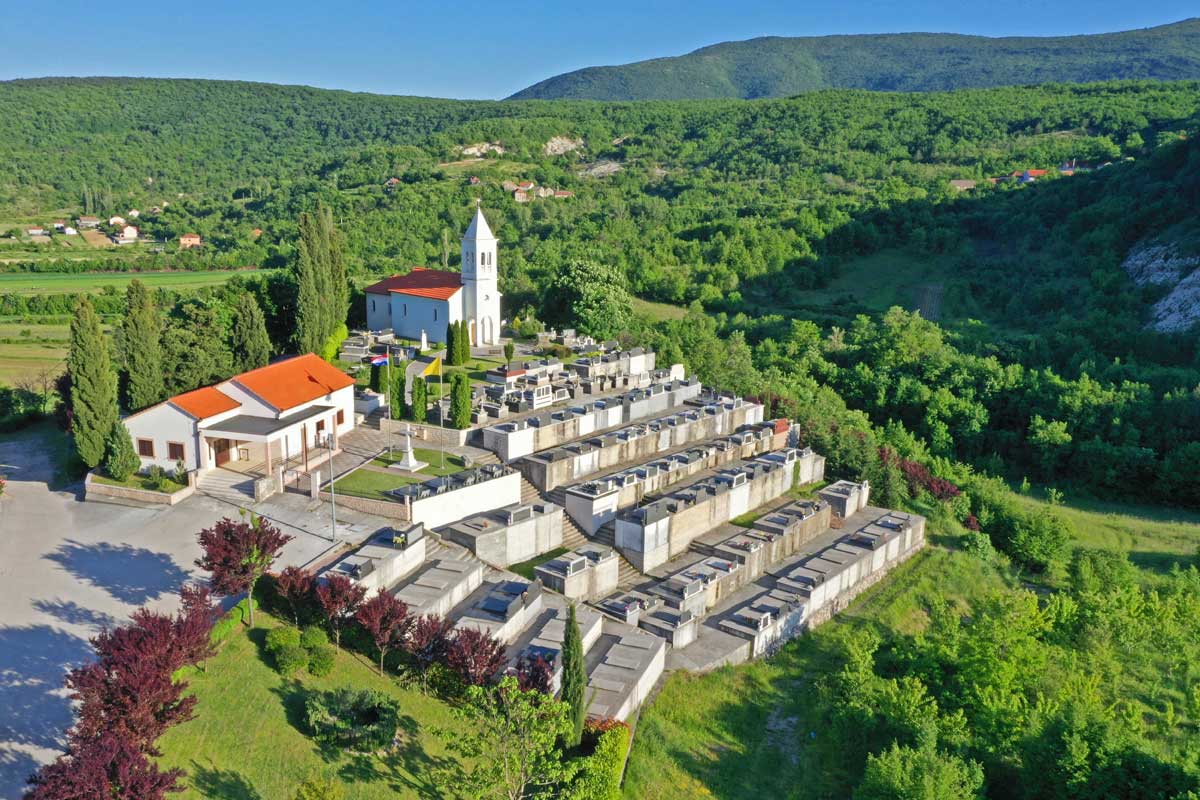
Ante Gašpar
Lučane is a village that is located in the extremely fertile valley between the mountain slopes of Radošić, Sušanj and Gaj. Despite insufficient scientific research, the archaeological findings to date suggest the existence of an earlier prehistoric settlement. The existence of prehistoric pile dwellings is believed to exist on the small rivers Sutina and Točilo (towards Karakašica). The ancient Illyrian settlement Setovia is also suspected to be located on the hill Sušanj, which is known for Roman emperor Augustus' campaign against the Dalmatae - an Illyrian tribe, from which the name of today's Croatian Dalmatia county originates. Experts believe that the ancient main road that connected the towns of Andetrium (today’s Muć) and Aequum (Čitluk) ran through Lučane. Some late antique tombs have also been discovered, dated between the 3rd and 6th century. The patron saint of the suburb is Saint Catherine, to whom the parish church is dedicated. Her feast is traditionally celebrated on November 25th and, according to the old saying, she brings snow (“Sveta Kata, snijeg na vrata”, meaning in English: When St. Catherine's feast is just around the corner, it will snow).
Radošić
Radošić is a village in the Karst highlands between Mount Visoka and the town of Sinj. It is considered to be one of the suburbs that, due to its urban growth, makes already a part of the city itself. The suburb extends over 3 km and the nature of the various small villages within it is characterized by the specific terrain of the mountain. Visoka (892 m) is a mountain that is located above Sinj. More precisely, Visoka is the southeastern mountain slope of the Svilaja Mountain, which is separated from the mountain itself by the steep river valley called Sutina.
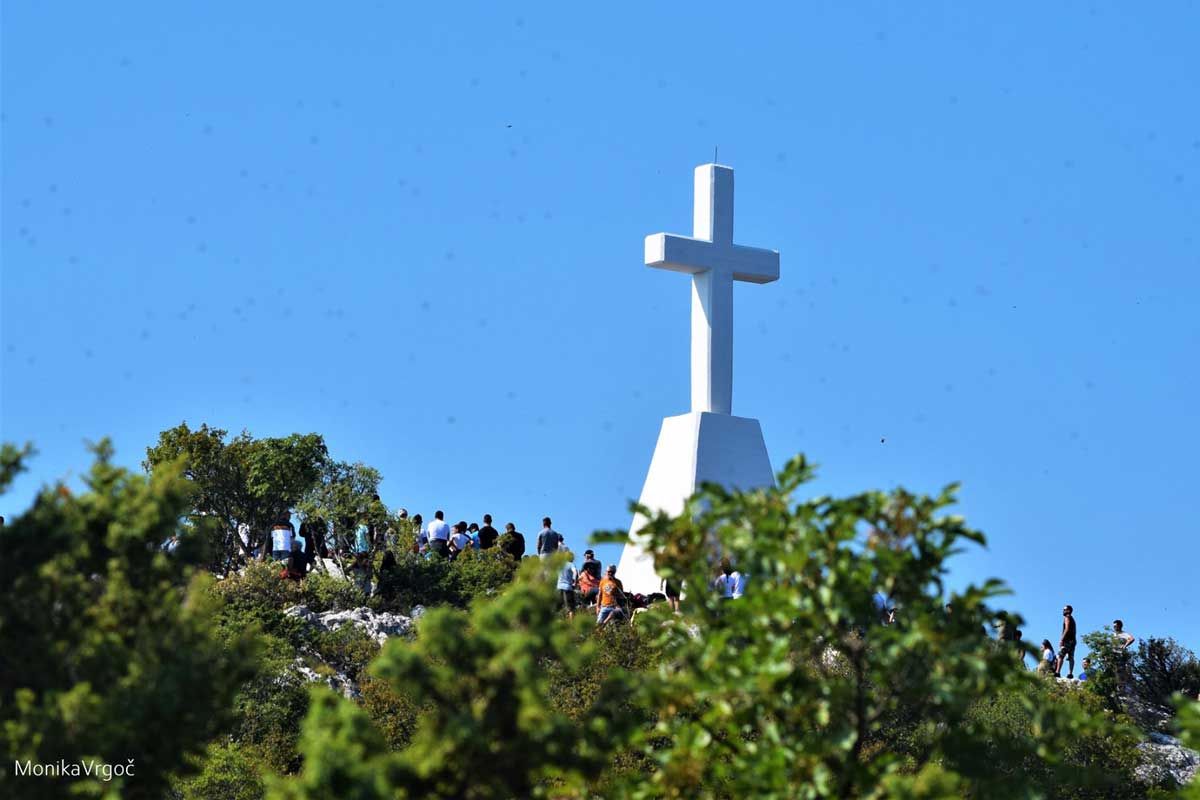
Monika Vrgoč
This 13 m high cross is located on the peak of Visoka and was built there back in 1933 on the occasion of the 1900th anniversary of the suffering, death and resurrection of Jesus Christ. The cross, which can be seen from all the villages of the Cetinska krajina, is considered a protection and a blessing for the entire surrounding area. Every year on the Sunday before the Uzvišenje sv. Križa (Feast of the Exaltation of the Holy Cross; 14th September) many believers make a pilgrimage to the cross. It is generally a popular place for hikers, mountaineers and people who like to go on trips. The mountain top offers a breathtaking view: on the one hand the town of Sinj, the Sinjsko polje and their surroundings and on the other hand the valley basin with the town of Dicmo and, farther out, the sea and islands.
Obrovac Sinjski - Han
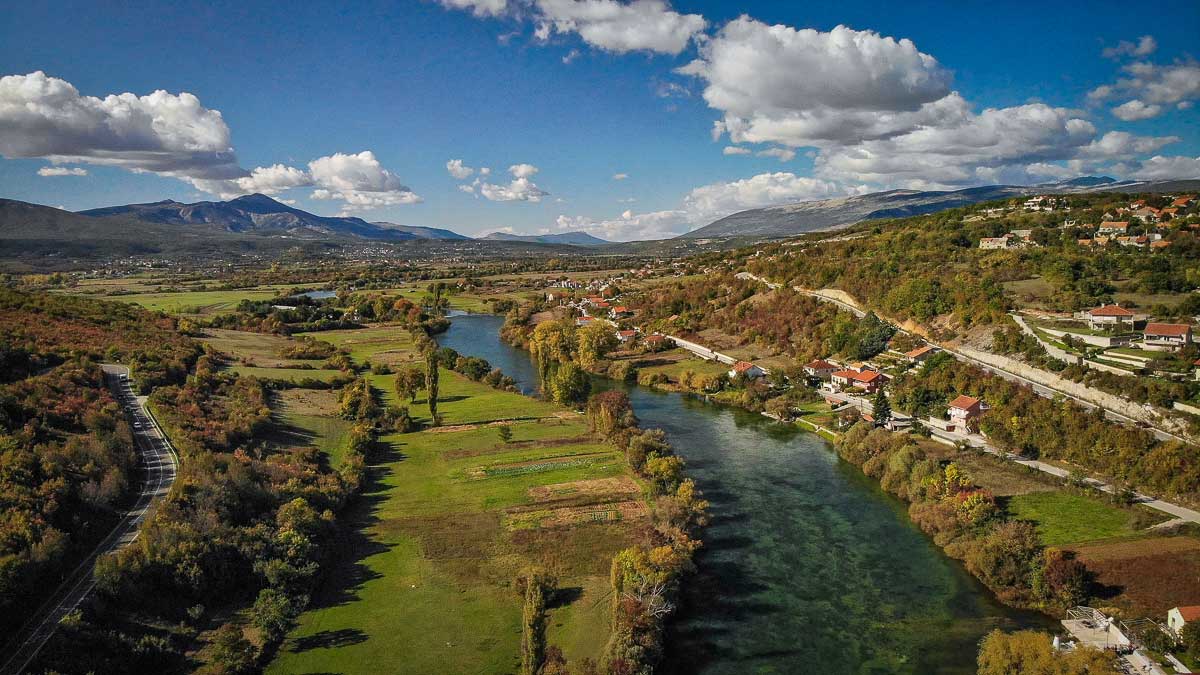
Roko Pavlinušić
Obrovac Sinjski, a village located about 4 km far away from the town of Sinj, lies on the left bank of the river Cetina along the north-eastern edge of the Hrvatačko polje, near the villages Bajagić, Gala and Glavice. In the nearby village Han, you can see a bridge that spans the Cetina River and it is actually the only transport route to the nearby town of Sinj. That bridge is the second in range, downstream of the Peruća dam. It was built near the destroyed Ottoman bridge as part of the trade route that in ancient times led from Salona (today's Solin) across the Cetina river into the Roman province of Dalmatia – and back in the Middle Ages then from Split via Klis towards Livno. The bridge was essential for both passenger and freight transport. In their time, the Ottomans built a place to stay next to the bridge with a small tavern or han in it (Turkish: ← pers . Hān, hāne: house), to which today's suburb Han owes its name. The need for such a construction arose because of the numerous trade caravans that regularly traveled to Split from the Eyâlet or Paschalik Bosnia, which was a province of the Ottoman Empire. The bridge was destroyed during the Venetian-Austrian Turkish War (1714-1718), during which the glorious Battle of Sinj also took place in 1715. Ever since the destruction of the bridge, the river Cetina has been crossed solely by ships (from Kerep, a place in the suburb of Otok).
The preservation of an even much older Roman bridge is contained in the toponym Mostina (Croatian: “most” in English: bridge), at today's mill Tripalova mlinica, where the bridge was once located. The area around the bridge was of high importance and economically very active. There were commercial and residential buildings there, the so-called villae rusticae, of which only remnants are left today. There were also workshops in which bricks had been made at the time. Indications of the existence of these workshops were discovered back in 1956, but unfortunately, were also destroyed.
Suhač
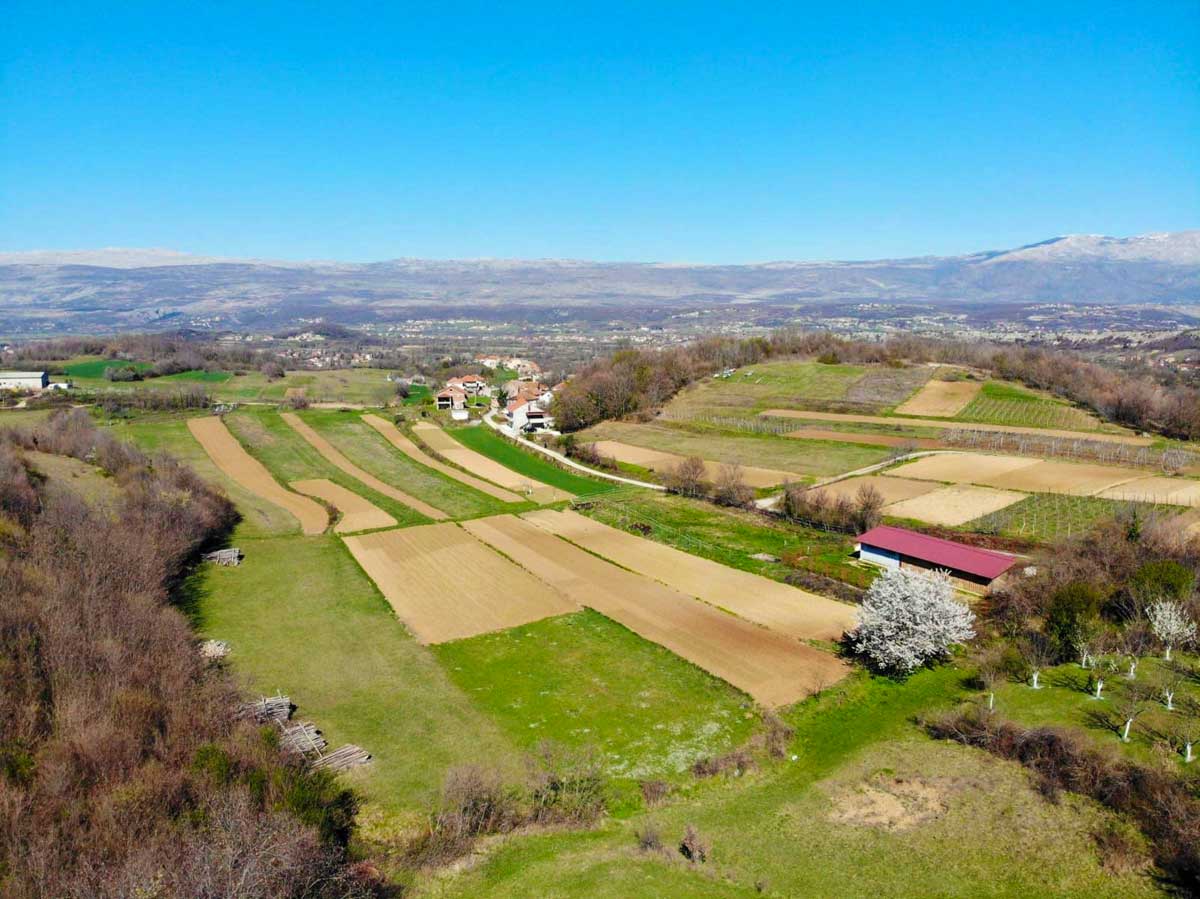
Mirko Gaurina
Suhač is a village located north of Sinj, at an altitude of 380 m above sea level. Suhač was mentioned for the first time in 1341, around the same time as Sinj was mentioned for the first time during the Middle Ages. Nowadays, Suhač attracts many sports enthusiasts who enjoy the newly prepared promenades towards the 4 km long, moderate hiking trail, called Pavića nebesa.
Turjaci
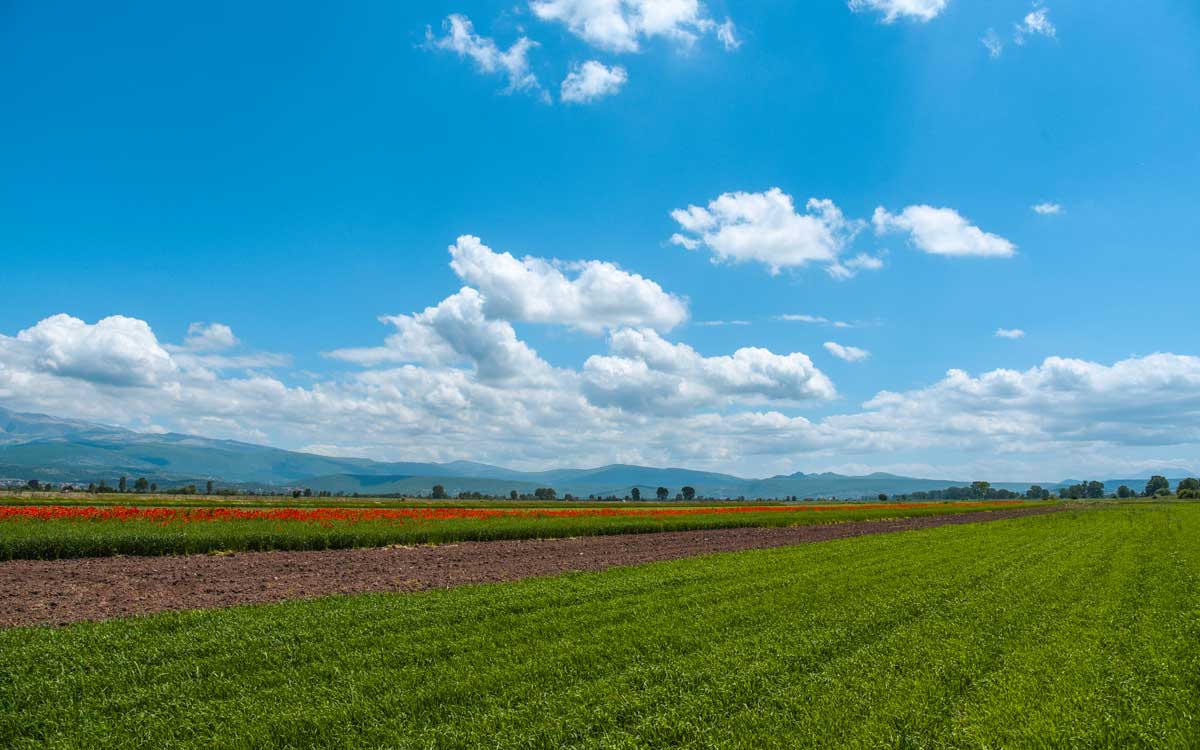
Željko Zrnčić
Turjaci is a village located 4 km from Sinj along the southwestern edge of the Sinjsko polje and the expressway that connects the cities of Sinj and Trilj. In Turjaci, you can see the church of Saint Anthony of Padua, whom the local residents commemorate and celebrate every year on June 13th with an occasional procession and a folk festival. Numerous archaeological finds testify to the impressive and exciting history of Turjaci.
There is a long tradition of dealing with agriculture and cattle breeding, especially with the famous high-quality and particularly fine sand from Turjaci, known as turjačka pržina. At the equestrian competition Sinjska alka, it is still the only type of sand that is scattered over the track both during the preparations and the festival itself.
Turjaci is also home to the Pržina traditional bowling club, which takes part in the traditional bowling league of the Split-Dalmatia County. In addition, the association takes part in a wide variety of social and charitable activities, actively encouraging younger generations to participate in sports and always making its contribution to promote culture and the spirit of sport.
Zelovo
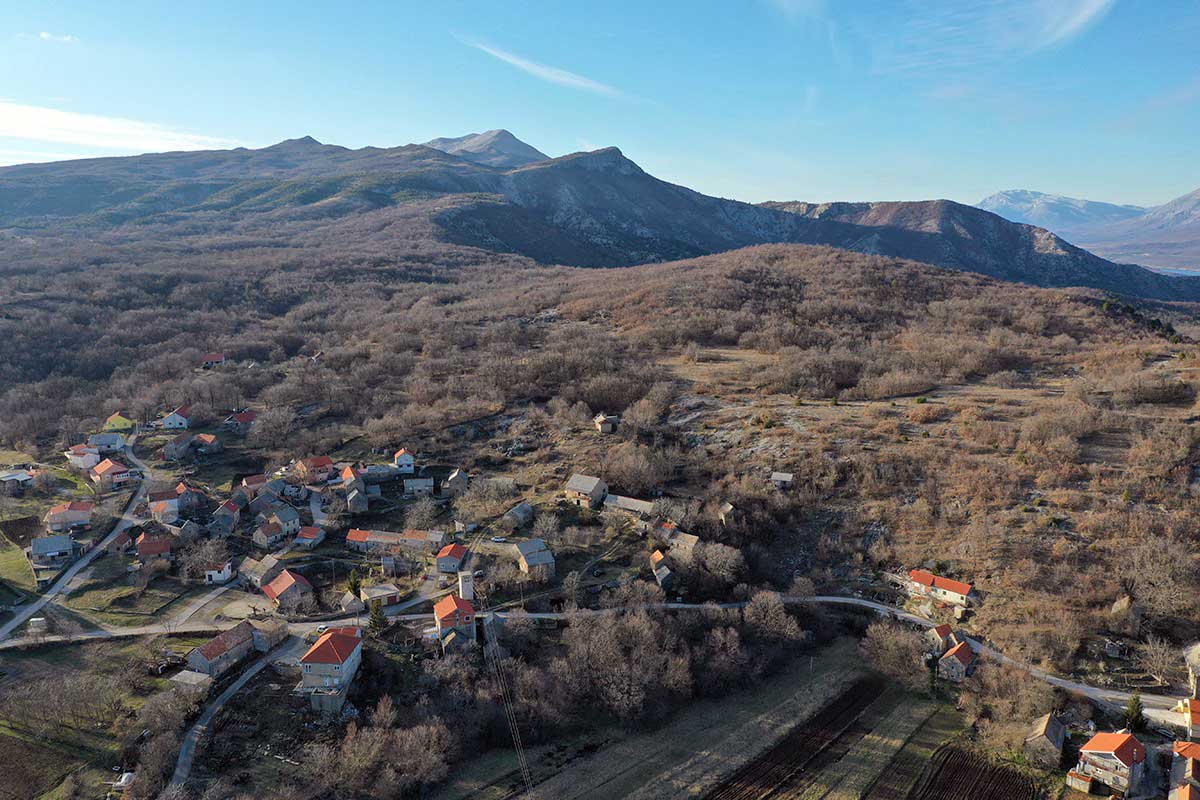
Ante Gašpar
Zelovo is located at the bottom of the southern slopes of the Svilaja Mountains that determine both the location of the village as well as the peculiarities of the local residents' everyday life. Zelovo is located 14 km away from Sinj and 7 km away from the Hrvace commune, which are also the closest settlements one to another.
The mountains Plišivica, Gradina and Orlove stine (in English: Eagle Rocks) are also located in the vicinity of the area. They are magnificent cliffs of Mount Svilaja, famous for the temporary settlement of griffon vultures during their migration to the island of Cres, in Croatia, as well as to the Julian Alps, in Slovenia.
In the village there is also the church of St. Vitus, the holy patron saint of Zelovo, who is celebrated every year on June 15th.
Zelovo is known for making local tobacco pipes, called zelovske lule, made from baked clay. These tobacco pipes were made in this way exclusively in Zelovo and nowhere else in Croatia. In addition, the residents of the suburb also made cigarette holders, wooden toys, furniture and everyday objects (rakes, pitchforks) as well as decorative objects, wooden dishes, traditional bowling balls and musical instruments (bagpipes, double-row shepherd's flutes, the string instrument gusla and various wind instruments). Almost every single household in Zelovo was considered to be its own production drive for a wide variety of handcrafts. The beginnings of tobacco pipe production go back to the first half of the 18th century, when families with the surnames Delaš, Domazet and Jukić moved to Zelovo. Those families boosted the production of pipes and cigarette holders, while the families with the surname Gabrić took care of selling those manufactured products.
Today, Zelovo is a popular place not only for leisure travelers and mountaineers from all over Dalmatia but also for people who travel from far further away. In winter, the moment the first snowflakes fall in the area, it is teeming with enthusiastic visitors who not only indulge in the natural beauties and the richness of all the plant and animal life of this region but also like to enjoy the relaxing atmosphere and the cheerful company in the mountain hut Orlove stine.









